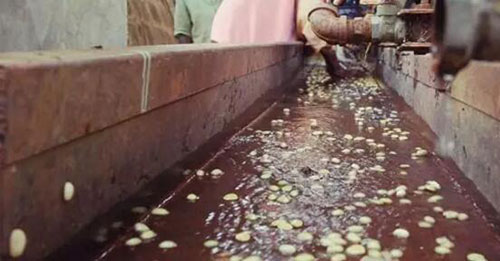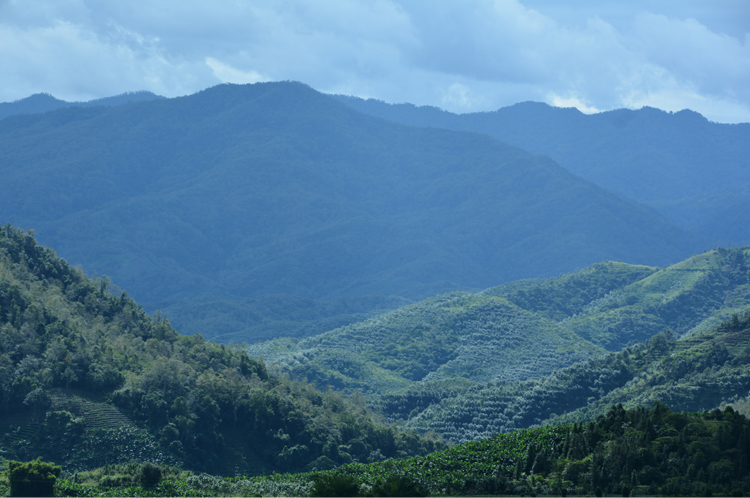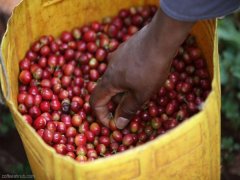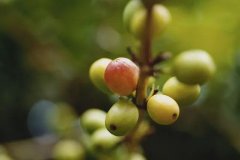Data description of flavor and taste of aged Mantenin hand punching temperature, grinding degree and powder-water ratio in Indonesia
Professional barista communication, please pay attention to coffee workshop (Weixin Official Accounts cafe_style )

Arabica saplings were first introduced to Ceylon (present-day Sri Lanka) and Indonesia by the Dutch in the 17th century.
In 1877, a massive disaster struck the Indonesian islands, and coffee rust destroyed almost all the coffee trees. People had to abandon Arabica, which had been in business for many years, and imported Robusta coffee trees from Africa.
Sumatra mantenin is a rare arabica species. Planted on hillsides between 750 and 1500 meters above sea level, the mysterious and unique Sumatra species gives mantnin coffee its rich aroma, rich taste, intense flavor, slightly chocolate and syrupy notes.
During the Japanese occupation of Indonesia in World War II, a Japanese soldier drank excellent coffee in a cafe, so he asked the owner, the name of the coffee, the owner mistakenly asked him where you are from, so he replied: Mandenin. After the war, Japanese soldiers recalled drinking "Mantenin" in Indonesia. So Indonesia asked the passenger to transport 15 tons of coffee to Japan, which was very popular. The name of Mantelin spread like this. The coffee merchant is now the famous Puwani Coffee Company (PWN) from Aceh Gold TP, a subsidiary of La Minita. The reason why it can become one of its top Mantelin products and become famous all over the world is because it inherits the strictest quality management of La Minita Company. The company specially sends people to Sumatra for technical guidance, from planting to processing. It also requires full harvest of ripe fruit.
This coffee bean is processed by Volkopi processing plant located in Aceh area (blue batak is also the product of this processing plant), so the processing method is the best, mainly washed in the first stage, then sunned, plus TP: Triple pick means three manual selections. Therefore, the beans are very clean and are really very valuable products.
By default toasted to a pre-explosion degree, it has a hint of elegant herbal aromas of traditional fine mantnings, distinct clean and attractive aromas of sweet peaches and preserved apricots, without astringency.
The coffee book Coffee Science also spends a lot of time describing the gold of Asher. If you have the opportunity to look through the aged Mandheling, which is also from the Lamini Group, the quality naturally does not need to be mentioned.

The aged mantelin is a distinctive mantelin produced by special and complex treatment of fresh mantelin for more than 5 years. As with gold mantinin, its annual yield is limited. Due to the high difficulty and complexity of processing and preservation, the yield of aged beans is smaller, and the treasure is evident.
This Chenman has mint coolness, light vanilla flavor, herbal tea sweetness, complex spice flavor and strong flavor with high body. Dry aromas of grain sprouts, malt and wood; wet aromas of dark toasted caramel and pine, with a hint of earthy after rain. On the palate, the palate is intense and stimulating, with cloves and woody aromas and a strong, persistent mint finish.
Hand-washed aged mantinin. 15g powder, medium fineness grinding (sugar size), v60 filter cup, water temperature 88 ℃, first injection of 30g water, steam-ste
Important Notice :
前街咖啡 FrontStreet Coffee has moved to new addredd:
FrontStreet Coffee Address: 315,Donghua East Road,GuangZhou
Tel:020 38364473
- Prev

Jamaica Blue Mountain Coffee Manor R.S.W United Manor introduction Blue Mountain Coffee beans are good?
Professional barista communication please follow the coffee workshop (Wechat official account cafe_style) top Blue Mountain R.S.W United Manor Blue Mountain Coffee R.S.W ESTATES ◆ Coffee Bean production area: Jamaica Top Blue Mountain R.S.W United Manor ◆ raw bean treatment: honey treatment ◆ flavor performance: good cleanliness, obvious sweetness, lime sweet, berry sour, touch
- Next

Why Blue Mountain Coffee Is So Expensive
Professional barista communication, please pay attention to coffee workshop (Weixin Official Accounts cafe_style) The price of high-quality blue mountain coffee beans is $80 per pound, which is a real aristocrat in the coffee world. Do you know why Blue Mountain Coffee is so expensive? Blue Mountain Coffee is produced in the Blue Mountains, more than 2,000 meters above sea level in the eastern part of Jamaica Island. It not only has large particles, but also has a rich and mellow taste. It will be sweet and
Related
- Detailed explanation of Jadeite planting Land in Panamanian Jadeite Manor introduction to the grading system of Jadeite competitive bidding, Red bid, Green bid and Rose Summer
- Story of Coffee planting in Brenka region of Costa Rica Stonehenge Manor anaerobic heavy honey treatment of flavor mouth
- What's on the barrel of Blue Mountain Coffee beans?
- Can American coffee also pull flowers? How to use hot American style to pull out a good-looking pattern?
- Can you make a cold extract with coffee beans? What is the right proportion for cold-extracted coffee formula?
- Indonesian PWN Gold Mandrine Coffee Origin Features Flavor How to Chong? Mandolin coffee is American.
- A brief introduction to the flavor characteristics of Brazilian yellow bourbon coffee beans
- What is the effect of different water quality on the flavor of cold-extracted coffee? What kind of water is best for brewing coffee?
- Why do you think of Rose Summer whenever you mention Panamanian coffee?
- Introduction to the characteristics of authentic blue mountain coffee bean producing areas? What is the CIB Coffee Authority in Jamaica?

